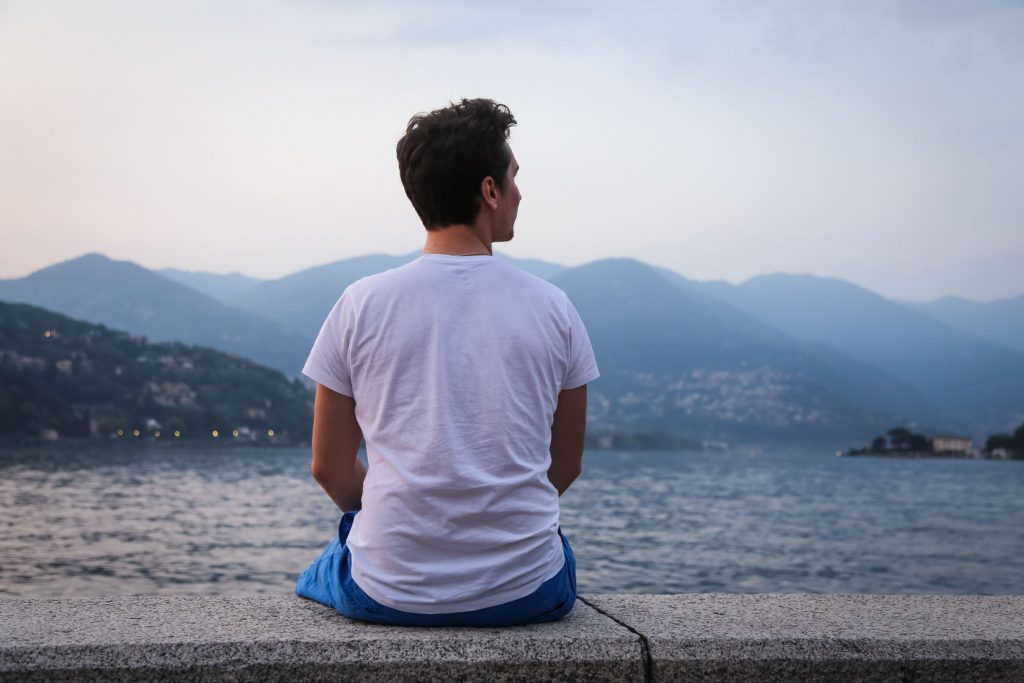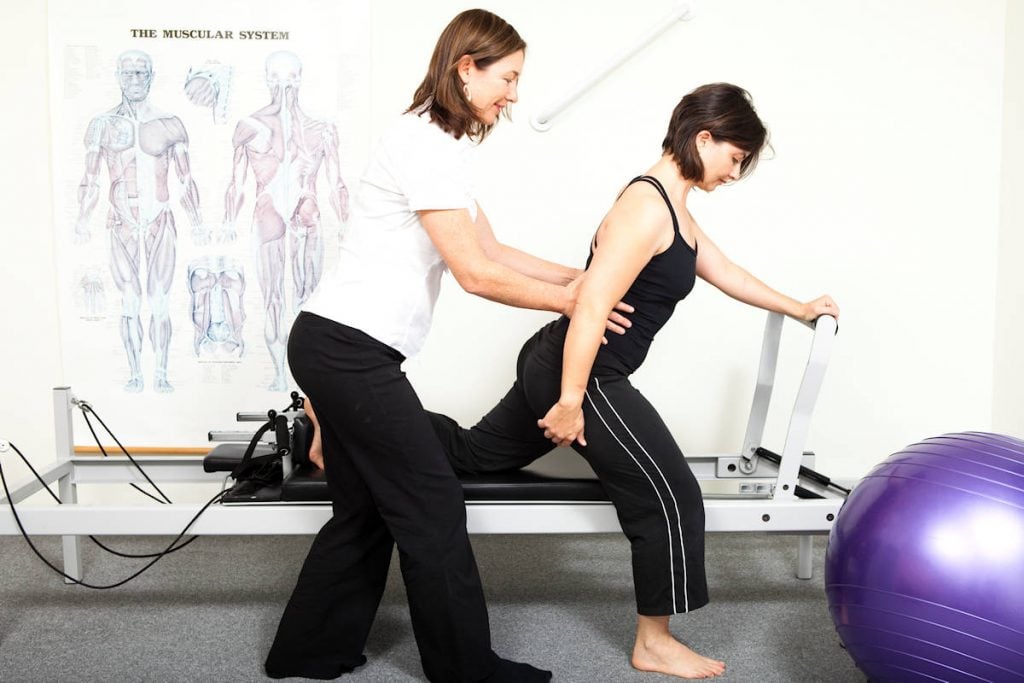



Have you ever tried to improve your posture? How well did that work for you? If you are not satisfied with the results, consider attending Feldenkrais classes. The Feldenkrais Method can help you achieve comfortable and effortless posture through ingenious and mindful movement exercises.
The changes become integrated into your every-day life. Soon you will find yourself sitting, standing and moving in ways that you never imagined could be so easy or comfortable.
Sit on a firm chair with your feet flat on the floor. Come forward in the chair a bit so you are not using the back rest. Sit normally and close your eyes for a few moments. Notice your posture. Stay there for a minute or two just observing yourself. Then open your eyes again.
When you observed your posture, what is the first thing that came into your awareness? What parts of the body did you sense? Perhaps you thought about whether you were sitting or standing up straight? You might have become aware or your head, neck and back. Perhaps you sensed your spine and checked its alignment. Maybe you tried to correct yourself. These are things many of us were taught to do growing up.
Consider that parts of your body that may not have been included in your awareness. Your hands and feet? Your chest and rib cage? Was your abdomen free to move with the breath? How long could you sustain this posture comfortably
3 minutes to Better Posture
Now try this short exercise with Ruthy Alon. Then go back to the sitting body scan above and feel the difference.
About Ruthy Alon
Ruthy is an international Feldenkrais trainer who studied and taught with Moshe Feldenkrais for over 20 years. It is hard to believe that in this video she is 85 years old. Ruthy is still teaching, a huge inspiration for those of us interested in healthy ageing.
1. When we try to straighten the spine we often increase effort in the muscles of the back without releasing the flexor muscles in the front of the body. The result is one muscle group working against another. This causes spinal compression.
2. Some of us work so hard in our back muscles to maintain good posture that we end up bowed backwards, thinking that we are actually straight. This ‘military’ style of posture can lead us to be stiff and stuck in our movements. People who do this are usually unaware of it.
3. A common frustration in trying to improve posture is that the changes only work while you are consciously paying attention. As soon as you stop doing that, you slip back into old habits.
4. Yet another problem with this method is that the effort to straighten can result in restriction of the breathing.
1. Focusing on dynamic, not static posture
Moshe Feldenkrais described good posture as ‘the ability to move equally easily in all directions’. This is dynamic posture. By contrast, static posture may involve trying to hold yourself still when you are sitting or standing. This may cause breath holding. It’s also literally impossible be completely still. We actually maintain our balance in upright positions by using subtle swaying movements.
2. Reducing effort
As you learn where to let go of unnecessary effort, you will discover how to find more efficient support from your muscles and bones. Learning to move easily in and out of a particular position is just as important as maintaining good alignment.
3. Learning first while lying down
To learn a new way of supporting the body against gravity Moshe Feldenkrais first taught a variety of movement lessons lying down. The reason is that lying down makes it easier to reduce muscular effort. This helps you sense what you are doing more clearly so you can make small adjustments towards greater efficiency. It means you are less likely to fall into inefficient habitual patterns and postures.
4. Expanding the self-image
In the Feldenkrais Method you will learn to bring your attention to each part of the body that is involved in an action. You will learn how even seemingly unrelated parts of the body such as your hands, feet, eyes, ribs and hip joints can influence your posture. The more parts of your body that can be included in your self-image, the more clearly you will know what you are doing. In the words of Moshe Feldenkrais ‘When you know what you’re doing you can do what you want’.
“When you know what you’re doing you can do what you want” – Moshe Feldenkrais.


Saturdays at 10:00 am
Moving on from last series freeing the neck and the jaw to twisting and turning without effort.
Mondays at 6 pm and 7pm, Tuesdays at 9.30am, Thursdays at 10.30am
This term the focus is on power without effort. We will be exploring the bodies natural ‘movement physics’, paying attention to the bodies hinges and levers.
The aim will be to create more energy efficient movement.


Pilates is a system of body conditioning, which helps improve posture, strength, flexibility and core stability. It is named after its inventor, Joseph Pilates (pronounced pi-lah-tees), a physical trainer who worked in an internment camp during World War I.
Later he ran a studio in New York. As it was next to a dance studio, he assisted many dancers to overcome injuries. As a result some of the exercises he taught are very challenging, as they were designed for dancers, who required a very high level of strength and flexibility.
Exercise Rehab and Pilates Classes have been developed by our Physiotherapists to help overcome pain and movement problems and assist rehabilitation. At Free2Move in Perth , some common exercises have been modified to make them safer and more therapeutic. Other exercises have been eliminated, due to the risk of injury, which has been reported with conventional Pilates.
Recent scientific research has shown that sufferers of back pain often have a weakness in specific spinal, pelvic and abdominal muscles, known as the ‘core stabilisers’. Learning to sense and activate these muscles is a fundamental part of the Pilates technique. Often the core muscles are not being activated effectively or at the right time. The surface muscles may be over-activated in an attempt to compensate for a weak core or poor postural endurance.
Many Physiotherapists have found that retraining of the deep or ‘core’ stabilising muscles is essential in helping someone with back, neck, hip or shoulder pain return to optimal function. The carefully controlled stretching and strengthening exercises in Exercise Rehab and Pilates Classes often involve stabilising one part of the body, while moving another part. This helps you to build up the awareness, strength and endurance in your deep or ‘core’ muscles so important to good posture and comfortable efficient movement. These muscles are ‘stabilisers’ and they differ from your main ‘movers’ in a number of ways.
Activating the core muscles is not a strenuous activity for the body and yet many people find it difficult at first to differentiate these muscles. It may take a lot of concentration and practice. For some people it feels easy but then certain muscles are sore the next day from unaccustomed use. Others find it takes a few weeks or even months before they are really sure they are activating their ‘core’ muscles, while keeping the surface muscles relatively relaxed.
Your muscles tend to work in pairs to support your spine and other joints. A muscle imbalance occurs when one muscle group becomes excessively tight and it’s opposing group becomes weakened. Muscle imbalance can cause poor posture. Conversely, poor posture can result in muscle imbalance. For example lower back pain can cause muscle tightness in the lower back, resulting in a ‘sway back’ (over-arching). The opposite group (the abdominals) then cannot work as efficiently, so it becomes harder to activate and weakened. Conversely, weakened abdominal muscles following pregnancy can result in lower back tightness resulting in a ‘sway back’.
Podiatrists tell us that 70% of Australians have pronated feet (dropped arches or flat feet). This can affect the alignment and cause muscle imbalances around your ankles, knees, hips and spine. In the neck and shoulders, the muscles that pull the shoulders forwards and upwards tend to be too tight or over-active in some people. The muscles that pull the shoulders down and back tend to be too weak. Other common imbalances occur in the rotator muscles of the shoulders and hips and in the inner and outer quadriceps muscles of the knee.
Exercise Rehab helps to correct these common imbalances by strengthening the weaker groups and stretching the tight muscle groups, helping you to find neutral alignment. To find out whether or not you have any muscle imbalances, see your Exercise Rehab Physiotherapist for a detailed assessment. When you are doing your Pilates exercise programme with Free2Move, your Physiotherapist will be checking that you are in a ‘neutral alignment’, helping you to overcome muscle imbalances and to get your core muscles working.
The main benefits are improvements in strength, flexibility, concentration, breathing, balance, coordination, posture and body awareness as well as relief of many chronic aches and pains. Exercise Rehab is also helpful for those with pelvic floor muscle weakness, as most exercises incorporate the pelvic floor as part of the ‘core stability’ system.
Exercise Rehab helps conditions such as arthritis, tense or tight muscles, and lack of strength. It also addresses posture problems, scoliosis, neck or back pain, sciatica, headaches, shoulder, and hip pain. It’s safe for most people with arm, knee or foot pain and is excellent for pregnant and postnatal toning.
At Free2Move North Perth, we have a special interest in Exercise Rehab based on Pilates exercises for chronic pain and joint hypermobility. We find that the increased strength and stability really helps to reduce pain levels.
Different people progress through these stages at their own rate. The ability to learn and incorporate the new patterns of muscle use varies widely. Although some people have underlying structural problems which cannot be changed by exercise, most pain and movement problems have a functional component, which means that they respond well to changing how you move and use your muscles.
While Exercise Rehab is usually not a ‘quick fix’, some people experience pain relief as soon as they become more aware of how their posture or movement is aggravating their condition. With Free2Move Exercise Rehab sessions, we find that most people take around 6 weeks before they feel a real difference. You should not expect to experience a long term change unless you are willing to commit yourself to 6 to 12 months of regular practice.